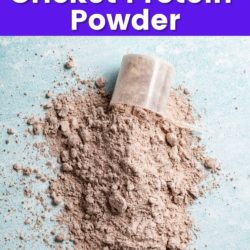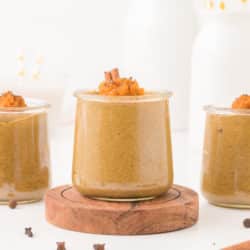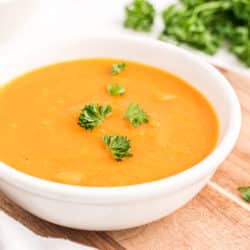Why and How to Use Cricket Protein Powder
One of the most innovative and sustainable protein sources is cricket protein. Before you dismiss this idea, learn why and how to use cricket protein powder for a complete source of protein with a low environmental impact.
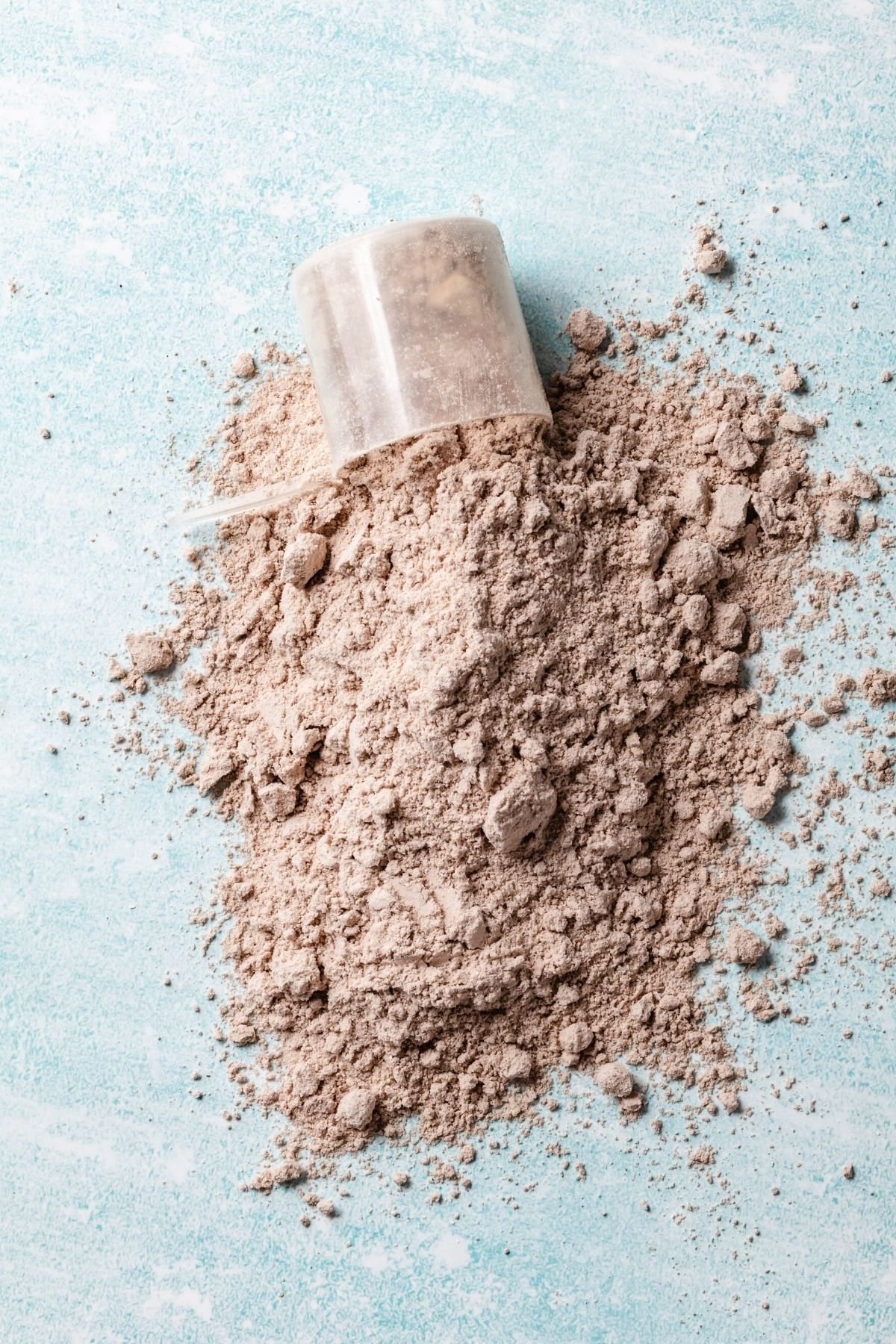
What is cricket protein?
Somewhat new to the Western world of nutritional supplements, cricket protein is incredibly nutrient-dense and is slowly starting to make a name for itself.
It may seem an unusual – or even gimmicky – protein source, but in many parts of the world, crickets are consumed daily. In Thailand, for example, it is not at all unusual to see insects sold by roadside food vendors.
If the thought of eating insects is a step too far for you, rest assured that it’s VERY easy to forget what cricket powder protein actually contains. The processing that it goes through means that you are left with a clean, mild-tasting product with a golden color that makes it look a bit like brown sugar or a light brown flour.
What is cricket protein made from?
Cricket protein – sometimes referred to as cricket flour – is made from a species called Acheta domesticus – the house cricket. These originated in southeast Asia and are now farmed commercially as a food source in North America and Europe.
The exact process of transforming the whole crickets into powder varies a little from one manufacturer to another.
In general, though, the whole, live crickets are harvested then held at a cool temperature, at which point they go into an inactive state called “stasis”. They are then frozen, thoroughly washed, boiled, and drained. After being carefully inspected, they are then dried for several hours before being ground into a powder.
There are strict guidelines that must be followed in the production of cricket powder and batches are lab tested for toxins to ensure their safety.
The good news is that – because cricket protein powder is made from the whole crickets – it provides a full nutritional profile.
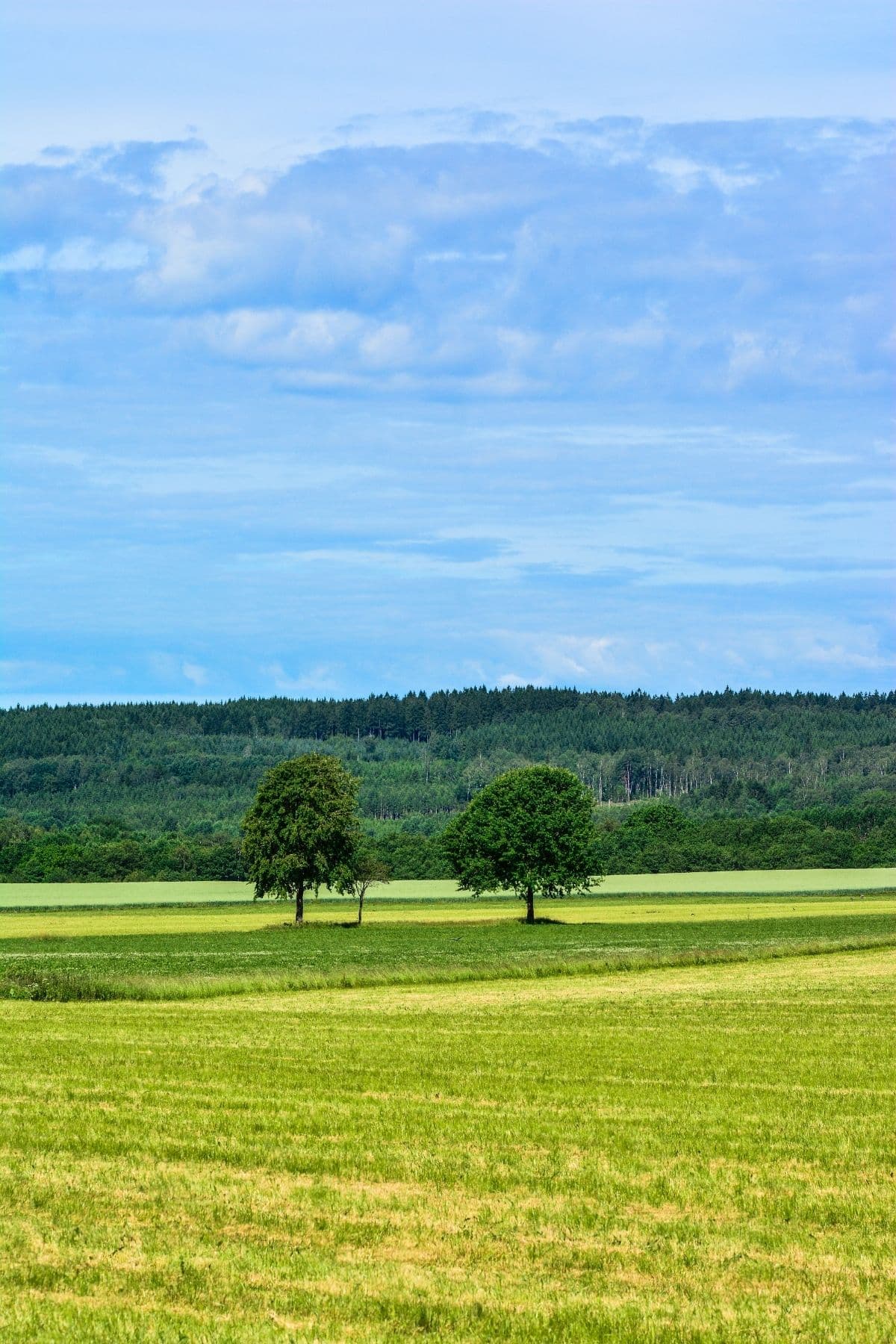
How does consuming cricket powder help the environment?
The UN suggests that agricultural production globally will have to increase by 70% by 2050 in order to feed the growing global population. That’s a worrying statistic since agriculture is one of the biggest causes of natural habitat destruction.
Yet compared to food sources like cattle, insects require very little water or land and produce fewer greenhouse gases – all important factors in protecting our planet. This makes cricket powder a viable, sustainable alternative protein source to meat.
See my full article on the best diets for climate change.
Cricket protein nutrition highlights
Cricket powder is – of course – an excellent source of protein. In fact, each bug is composed of around 58 to 65 percent protein, making consuming cricket powder comparable to eating skinless chicken breast or lean beef.
The protein from cricket powder is particularly beneficial because it is a “complete” protein. This means that it contains all nine of the essential amino acids that your body needs. These amino acids are the building blocks of protein and are used in tissues throughout your body. They are essential because your body can’t make them, so you have to consume them through your diet.
Crickets are also very high in iron, with some sources suggesting that they are a richer source than sirloin beef.
But the benefits don’t stop there and cricket powder contains so many other nutrients that it is commonly considered a superfood – a distinction that really sets it apart from other protein powders!
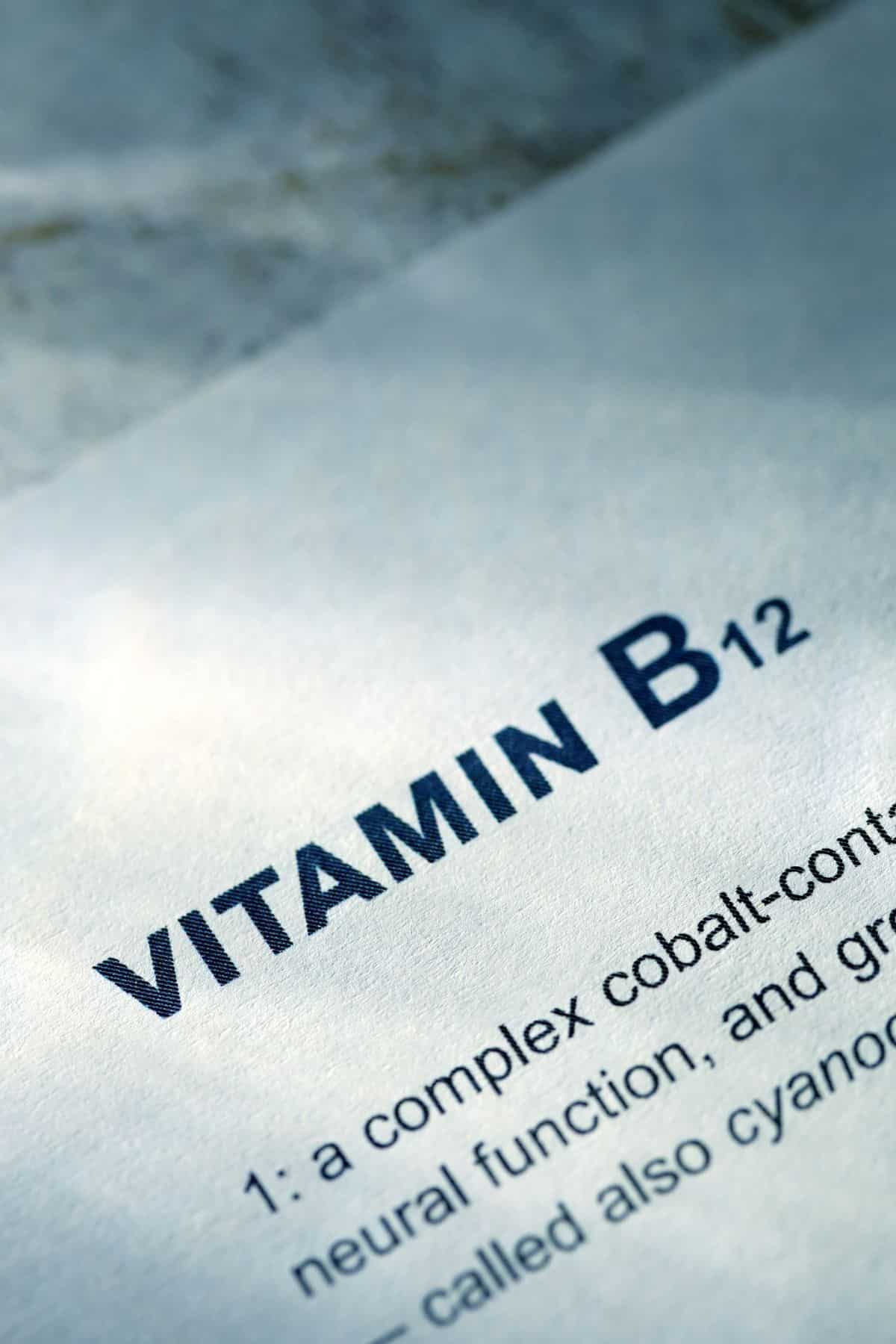
The nutrients in cricket powder include:
- chitin (a prebiotic fiber)
- vitamin B12
- minerals like calcium, copper, zinc, iodine, manganese
- fatty acids
If all of those benefits weren’t enough to persuade you to consider including it in your diet, you’ll be interested to hear that cricket protein is great for your gut health too.
Research published in 2018 showed that eating crickets supports the growth of probiotic bacteria and may help reduce inflammation through the body.
How to use cricket protein
One of the great things about using cricket protein in your recipes is that it blends into whatever you mix it with, without affecting the taste or texture. This isn’t the case with powders like whey or soy, which can be quite grainy and tend to have a stronger flavor.
Of course, the key is to only add small amounts. But since you can use cricket protein in so many different ways, it’s easy to get a regular supply throughout the day!
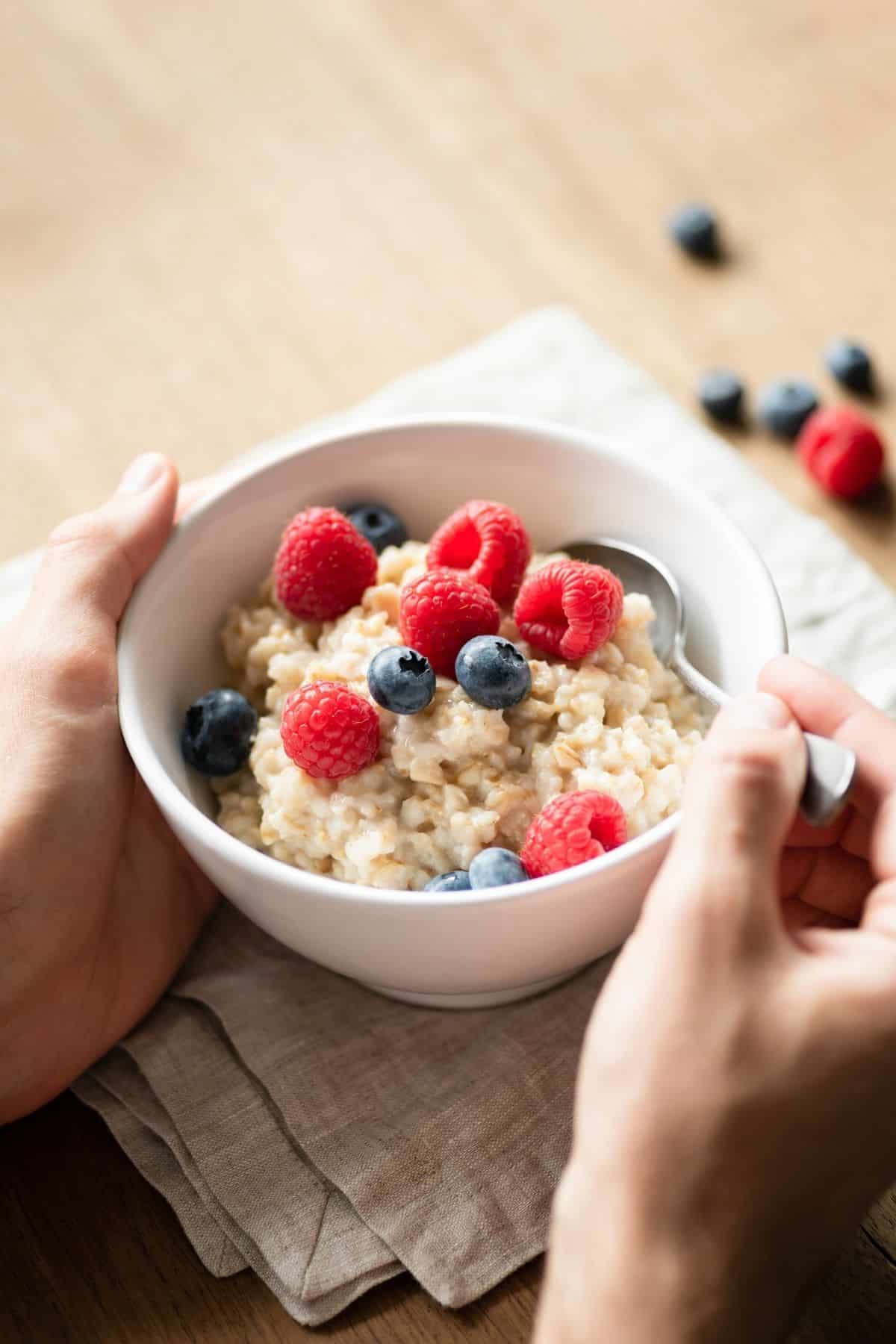
Here are some ideas:
- Mix it into your morning smoothie
- Stir a spoonful into cooked oatmeal
- Add it to flour when baking bread or muffins, or making pancakes*
- Combine it with meat in dishes like meatloaf or burgers
- Use it as a binding agent in veggie burgers or falafel
- Stir some into your pasta sauces or soups
Tip: When baking with cricket protein powder, the rule of thumb is to substitute no more than 25% of the regular flour with cricket powder.
Where to buy cricket protein
I have looked in many grocery stores for cricket protein powder, but I haven’t found one that stocks it yet! So, I personally buy cricket protein online. My favorite brands and products are:
FAQs
The thought that it may taste unappealing is what puts many people off trying cricket protein powder – but the truth is that it has a perfectly pleasant, nutty flavor. The color is a nice, rich brown, and the texture is just slightly grainy, but soft like flour.
At the moment, the demand for cricket powder is relatively low, which means so is the supply. But as demand increases, production will grow with it and so prices will come down. This is likely to happen sooner rather than later as the very real benefits of consuming cricket powder are becoming more widely known.
If you’re a big fan of whey protein then you might be interested to know just how it stacks up against cricket powder. While whey is certainly a rich source of protein, cricket powder gives you just as much protein – and a whole lot of other benefits besides!
For starters, cricket protein is sugar-free, unlike whey which has around 2.5g per 40g serving. It is also far more nutritious than whey, with lots more iron, vitamin B12, fatty acids, and fiber. Cricket protein is also a naturally dairy-free and gluten-free product.
Last – but most certainly not least – the production of cricket powder uses far fewer resources than the production of whey which comes from dairy. This makes it the more sustainable option and one you can feel better about choosing.
Research into edible cricket consumption has shown that insects are safe to eat as long as they are properly processed like other animal products. Cricket protein is on my lists of the best protein powders for pregnancy and the best clean protein powders.
Some people, however, may be allergic to insect proteins and chitin (a fibrous substance that makes up part of the exoskeleton of the cricket). Crickets or cricket protein powder should also be avoided if you have a crustacean shellfish allergy because they are arthropods like crabs, lobsters, and shrimp.
It is a good idea to speak to a medical professional before trying cricket protein powder if you have any allergy concerns.
Consuming crickets or any insects is not considered part of a vegan or vegetarian diet. However, I would argue that consuming cricket protein would be beneficial for people who are looking to avoid eating other animals or milk from animals.
The nutritional profile of crickets and insects is very compelling for people who don’t thrive on a strict vegan or vegetarian diet, but who don’t want to consume animals like cows or chickens.
Bottom line: even if you are on a vegan or vegetarian diet, you may want to look into the benefits of eating insects like cricket protein before you write it off. The iron content of cricket protein is another benefit for women who become anemic on a vegan or vegetarian diet (see my article about the health risks of a vegan diet).
Conclusions
Despite the fact that bugs are a traditional food in many cultures, trying cricket protein for yourself may take quite a leap of faith. But once you start to see crickets as the nutritious and sustainable protein source that they are, I think you’ll agree it’s a leap definitely worth taking!
Don’t forget to join my newsletter list to get exclusive clean eating recipes and tips. The newsletter is 100% free with no spam; unsubscribe anytime.
Note: this post is for informational purposes only and is not intended as medical advice. Please consult your healthcare provider for recommendations related to your individual situation.


